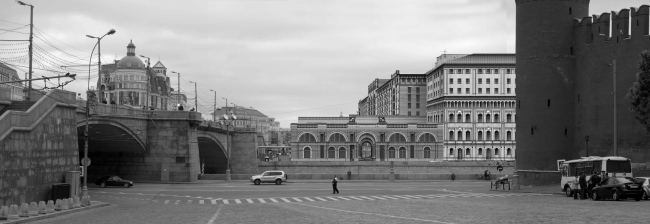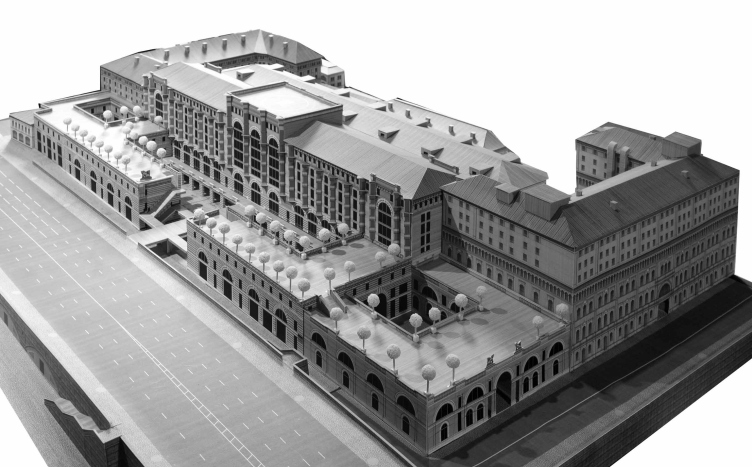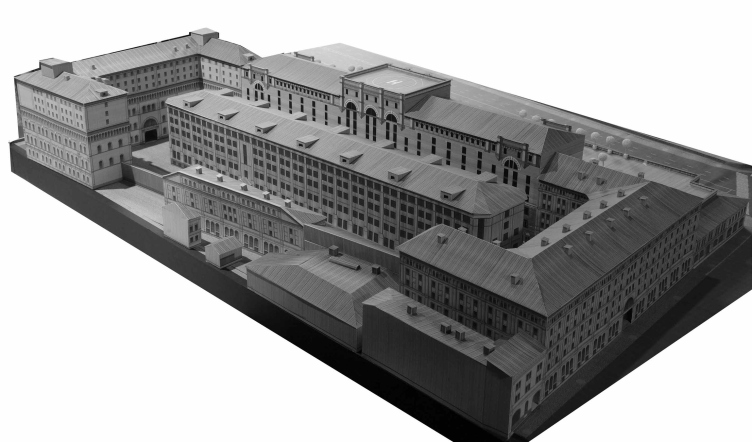Archi.ru:
Ilya, what you do think about the contest and its results?
Ilya Utkin:
Frankly, I do not understand the results of this contest and do not
understand its purpose at all. Agreeing to participate in it, I assumed that
the customer would not want to make any radical changes to the already-existing
project. Generally speaking, everything was OK with the customer - the volumes
and the dimensions of the building, and its square footage, while architecture
per se did not matter at all against this background. Getting a new and clear
architectural and town-planning solution was something that the architectural
community was after, as well as the experts and the historians. They wanted to
see a different architecture in this place. Apparently, it is because of this
that the contest ever took place. However, its results and its three winners
will give the project absolutely nothing. In reality, this is absolute
stupidity.
As
for me personally, I guess everyone knows my branch of architecture. If I am
invited to participate in this or that contest, that means that the organizers
and the customers are interested to know what I can say on the given subject -
meaning they want to know what Ilya Utkin thinks about that. And in this case I
simply expressed my opinion.
What concept did you propose for this land site?
Having studied the situation in detail, I proposed the concept that, in
my view, was maximally contextual; my project preserved the historical image of
the place. The new complex must become the final piece in the general
composition, form the eventual appearance of the quarterly building of
Kokorevskoe farmstead, from which today little is left. This place has a
complex history, its buildings changed over different periods of time, several
times they were rebuilt, much was destroyed and lost, unnecessary and
inappropriate superstructures appeared there. I attempted to gather and to
restore piece by piece the morphology of this land, to find the basis of its
composition and to complete it with a powerful, dramatic and expressive “master
stroke”. The symmetrical solution here seems to me the most appropriate one it
answers all the tasks that were set before us.
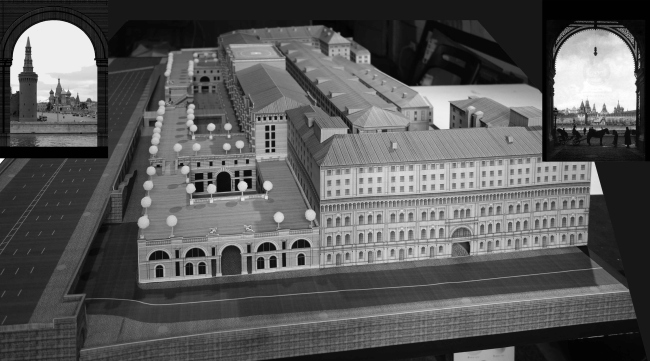
Project by Utkin Studio. Overview

Utkin Studio, one of the contest winners. Photo courtesy by contest organizers.
The
solution is based on the traditional layout of an expensive hotel of the early
previous century. This is an extended building with a central entrance that is
accentuated by the symmetrical facades of the side wings. Before the main
facade, there is a long court, flanked by three-story structures. From the side
of the Sophiyskaya Embankment, I proposed restoring the historical perimeter
planning, while the courtyards were to be linked with passageways running
through arched double-height openings.

Project by Utkin Studio. Overview

One
can argue about the architecture of the complex, of course. Some people will
even say that my project looks more like a train station or an airport. But I
think it is far from that. Any architectural detail can be revised, shifted
left or right a little bit - this is not what matters. What does matter,
though, is finding the optimum volume/space/composition solution. And this is
what my whole project was about.
What style would you prefer when forming the external image of the building?
The
style that I proposed for the facade design may be called eclectic. This is a
contemporary style that employs every architectural technique there is. This is
freehand compositional design that uses natural materials exclusively. The
tectonics of the buildings that are already there on the land site set the tone
of the new construction. These are the arch spans, the facades coated with
bricks, stone, ceramics, and metal. All the details of the project are
conditioned by the environment.

Winner of "Tsarev Sad" Contest. Project by Utkin Studio
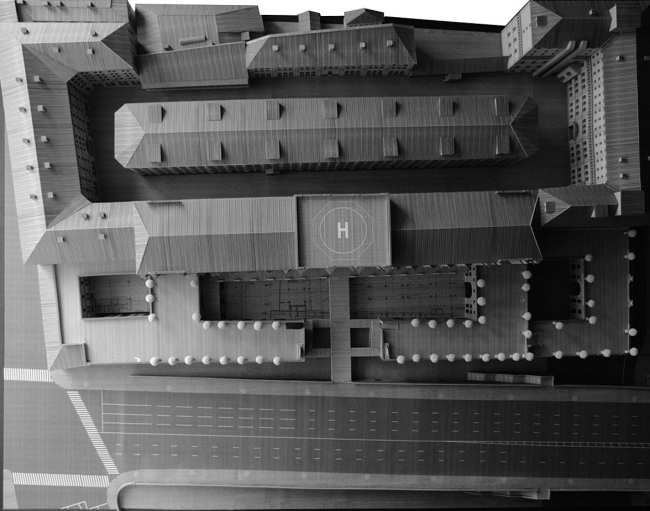
Project by Utkin Studio. Compositional solution. Top view
Besides,
the architectural image was defined by the proximity of the Red Square, Saint
Basil Cathedral, and the
The
specifications of the contest included "preservation and improvement of
the Kremlin Ensemble from the apartments". You can only see the Saint
Basil from the windows of each of the apartments if you use the classic
"bay window" layout of the facades or if you use extended windows.
Our proposal is based on the triangular bay window that protrudes a meter and a
half from the wall surface.
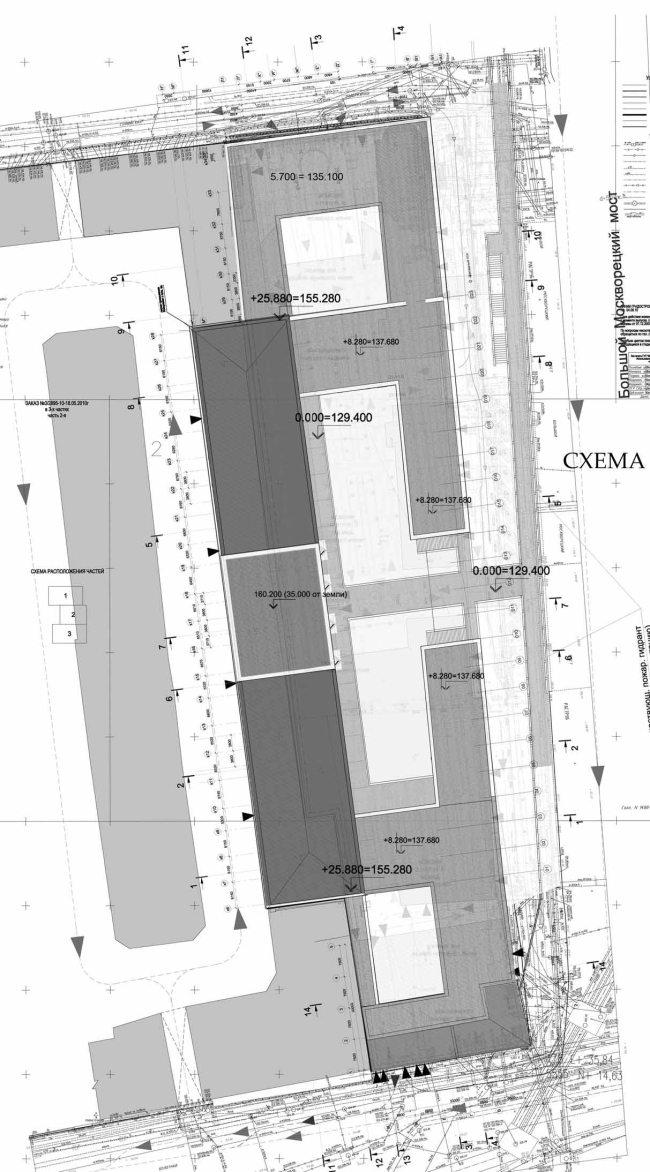
All
the basic markers of the existing project that was developed by Vyacheslav
Osipov, are preserved in my concept - because they were gotten by sweat of the
architects’ brow in the course of the studio's three years' work.
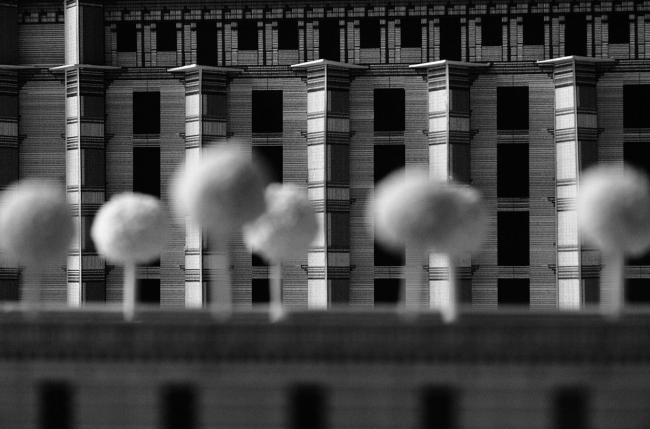
Fragment of the facade with triangular bay windows. Project by Utkin Studio


Project by Utkin Studio. Facade from the Kremlin side
Do
you plan to take part in the development of the project on the conditions that
were offered to you?
So
far, I am not in the loop of all the intricacies of the implementation plan of
the projects, I only heard some bits and pieces of how the contest ended, and I
am afraid to even suppose how it might develop further on. I did not
communicate with the commissioner on this subject either.
I
would describe the whole situation, however, as “Swan, Crayfish and Pike” (A classic Russian fable by Krylov that has
become the Russian idiom close to the English “circular firing squad” –
translator’s note). As we all very well remember, the heroes of this fable
never did move the cart off its place. Any project activity must be centralized
and must be submitted to a single "brain center". There must be
someone who is accountable for the fate of the building that is under
construction; somebody who is capable of making the right decisions. In the
situation where the borders of responsibility areas are vague, and important
decisions are made by different people, it turns out that nobody - and I mean
nobody - is responsible for the end result. And this is a system of ultimate
negligence and irresponsibility. And, to be quite frank, I do not at all feel
like trying to prove something and carry my own millstone in this situation.

Project by Utkin Studio. Facade/Section
